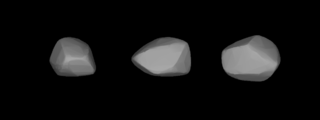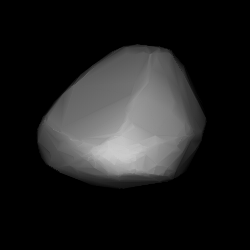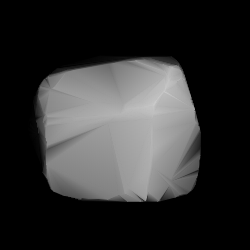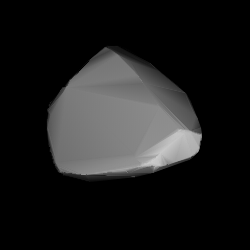
Pierretta is a 46 km main-belt asteroid discovered on 28 Aug 1891 by Auguste Charlois at Nice.
Rosalia is a large Main belt asteroid. It was discovered by Auguste Charlois on 1 September 1891 in Nice.

353 Ruperto-Carola is a background asteroid from the central region of the asteroid belt. It was discovered by German astronomer Max Wolf at the Heidelberg Observatory on 16 January 1893. It is named after the Ruprecht Karls University, whose Latin name is Ruperto Carola Heidelbergensis.

Gabriella is a typical Main belt asteroid.

Georgia is a typical Main belt asteroid. It is classified as an X-type asteroid.
Padua is a main belt asteroid that was discovered by Auguste Charlois on 17 March 1893 in Nice. It was named after the city of Padua, near Venice, Italy.

Bohemia is a sizeable Main belt asteroid. It was discovered by Auguste Charlois on 16 July 1893 in Nice.

Palma is one of the largest main-belt asteroids. It is a B-type asteroid.

Burgundia is a typical main belt asteroid that was discovered by Auguste Charlois on 18 September 1893 in Nice. It was named for the former French region of Burgundy. It is one of seven of Charlois's discoveries that was expressly named by the Astromomisches Rechen-Institut.

Wilhelmina is a large Main belt asteroid.

Cyane is a typical Main belt asteroid.

Arachne is a large Main belt asteroid. It is classified as a C-type asteroid and is probably composed of carbonaceous material. It was discovered on 13 October 1895, by German astronomer Max Wolf at Heidelberg Observatory.

Suevia is a typical Main belt asteroid. It is classified as a K-type/S-type asteroid.

Cremona is a minor planet orbiting the Sun.
Messalina is a minor planet orbiting the Sun. It was discovered on 3 October 1904 by Paul Götz, at Heidelberg. It is named after Valeria Messalina, the third wife of Roman Emperor Claudius.

643 Scheherezade is a minor planet orbiting the Sun. It was named after the fictional storyteller Sheherazad.

662 Newtonia is a minor planet orbiting the Sun.

708 Raphaela is a minor planet orbiting the Sun.

875 Nymphe is a minor planet orbiting the Sun. It is a member of the Maria family of asteroids.
829 Academia is a minor planet orbiting the Sun. The asteroid is roughly 44 km in diameter and has a low albedo. Photometric measurements of the asteroid made in 2005 at the Palmer Divide Observatory showed a light curve with a period of 7.891 ± 0.005 hours and a brightness variation of 0.44 ± 0.02 in magnitude.
















